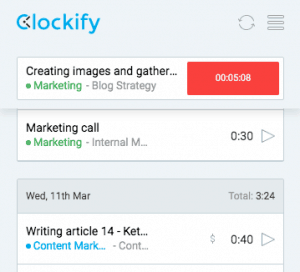I’ve been working remotely for over three years now. I love it!
The fact that I can work from anywhere in the world and set my own work schedule has helped my productivity shoot through the roof.
Regardless of how beneficial it is for me, I know most people feel more productive in an office environment.
The COVID-19 pandemic has temporarily forced us to change our lifestyles. Social distancing and self-isolation are the new normal — at least for the next few weeks.
In light of this, many businesses are implementing remote working as a solution to keep their team safe and productive.
If you are new to the remote working world, this guide is for you. Here you’ll find the basic information you need to get work done, stay productive, report your progress, and communicate with your team or clients from home.
The equipment you need to work remotely
Regardless of your occupation, you’d want to make sure you have two basic things: a good computer and great access to the internet.
If you’re only working remotely during the lockdown, then any decent computer, either a laptop or desktop, should be good enough. If you’re planning on doing it for longer, then a laptop is the best option as it will give you the freedom to set up your office anywhere in your house or wherever you want to work from when life is back to normal.
Whatever you choose, don’t forget to check if it supports any software you need to download.
In terms of the internet connection, it should be good enough for you to hold calls and video calls for long periods of time. Video calling and screen sharing usually require an upload and download speed of at least 128Kpbs while high-definition video calling requires 1.2 megabits per second.
If you don’t have access to the internet at home, you can turn your phone into a wi-fi hotspot by turning on the “personal hotspot” option. Ideally, you’d want to have an unlimited data plan as you’ll most likely be using it for several hours a day. Check the prices and plans available with your carrier.
While a computer and a reliable internet connection are essential, a good set of headphones, a microphone, and a webcam are great to have in order to keep in touch with your team.
The tools that will help you get work done, report your progress, and communicate with your team
Time tracking
Time tracking softwares allow you to record the time you spend working on different tasks. They all let you track your progress in real-time with a stopwatch-like tool you can start and pause as you please. They also have an option that lets you manually submit time spent on tasks you cannot track in real-time or simply when you forget to record your progress from the beginning.
 These tools generate useful reports that give you an overview on how much time you’ve spent on specific projects, clients, or tasks. They’re ideal for you to check whether you are spending too much or too little time on a task and also to share your progress with your boss, teammates or clients.
These tools generate useful reports that give you an overview on how much time you’ve spent on specific projects, clients, or tasks. They’re ideal for you to check whether you are spending too much or too little time on a task and also to share your progress with your boss, teammates or clients.
If you’re a business owner and want to keep a closer eye on the productivity of your employees, you can also set up automatic screenshotting, mouse and keyboard activity level reports or even GPS tracking if you like to keep your employee on a tight leash.
You can create an account as a team leader, team member, or as an individual.
Some of the top time tracking tools are:
Team and project management
Project management tools allow you to organize projects by separating them into specific tasks and to-do lists. These tasks can also be broken down into categories and you can label them, add due dates, comments, instructions, and attachments.

Team management tools are particularly useful when more than one person is working on the same project since it visualises progress.
Some of the top project management tools are:
Communication: Video conferencing
Communication is key when working remotely. Group chats and video calls will be the new normal when working from home.
This article about the dos and don’ts of video conferencing lists all you have to know about video conferencing etiquette.
To summarize, check audio and video settings before each call, make sure your background looks decent, wear appropriate clothing, and avoid background noise.
The best tools to have professional group video conferences are Google Hangouts, Zoom and Skype.
Google Hangouts is linked to your Gmail account. By going to your Google Calendar, you’ll be able to schedule calls and invite whoever you want. All the guests will receive a link via email and they’ll be able to join the video call even if they don’t have a Gmail account, which makes it perfect for communicating with clients or people outside your organization.
Skype works similar to Google Hangouts but it’s linked to your Microsoft account rather than Gmail. Apart from video conferencing, Skype also allows you to make local and international phone calls. Here are the different plans and pricing.
Communication: Group chats

Slack is the best instant messaging platform for businesses. As they explain, “in Slack, conversations happen in channels organized by topic, project, team, or whatever makes sense for your company”. They describe themselves as a “collaboration hub, where the right people and the right information come together, helping everyone get work done”.
It’s available as an online tool but it’s probably better to download the desktop version or even the mobile app and have them running in the background so you never miss a notification.
Feedback and teamwork
When collaborating on a project with a colleague, you might want to share feedback directly on a file whether it’s a word document, a spreadsheet or an image. These tools will allow you to do so:
- Google Drive: Google Drive allows you to create word documents, spreadsheets, slides for presentations online. It automatically saves your progress and lets you share the document with as many people as you want. They can see your progress in real-time and can make comments and suggestions in specific parts of the document.
- GSuite: If you are a business running a team working remotely and considering using Google Drive you may get more out of using GSuite where your remote team can use a lot more services that are useful when working remotely. Google currently has 1 year 20% discount offer on G Suite Basic Plans with the code PAFNCNEX4D3AJGV and for the G Suite Business Plan using Q39WGQFPQ6P9EDP as a referral code.
- BounceApp: BounceApp allows you to upload images and get or give feedback on them by simply clicking and dragging to make notes.

How to stay productive while working from home
✓ Set a schedule that works for you: If you are a night owl or an early bird, take advantage of it and work whenever you feel most productive (please do keep in mind any specific work times or windows your job requires of you!).
✓ Set a calendar and let people know when you will (or will not) be available: If you will not be working regular office hours, let your team know when they can expect you to read and reply to their messages.
✓ No PJ’s allowed! Have a shower and get dressed before you start working. It creates separation between leisure time and work time.
✓ Get help if you don’t know how to do something: It’s ok if you struggle with setting up your office in the beginning, installing software, dealing with settings, or even downloading and uploading files. Don’t hesitate to ask your team for help. In the same way, help others and be patient. It can be tough to get used to working remotely.
✓ Expect the working hours to decrease: Being in an office for 40 hours is quite different than actually working 40 productive hours. If you’re using a time tracking tool, don’t be surprised if you end up not logging in the full 8 hours every day. In a regular office environment, even if you take a 10-minute break, the time still passes. At home, you will have to stop the timer every time you get up. It’s ok if it takes you time to get as productive at home as you normally are in your office.
✓ Schedule casual conversations: Finally, schedule video calls with your coworkers to simply socialize and discuss non-work related issues. It’s a great way to keep the team connected and motivated until you can see them again.
Working remotely can be just as (or even more) efficient than working from an office. There are amazing tools that allow us to stay connected and get things done. Who knows? Maybe this is the perfect opportunity for businesses to realize that flexible working can make teams happier and more productive.






